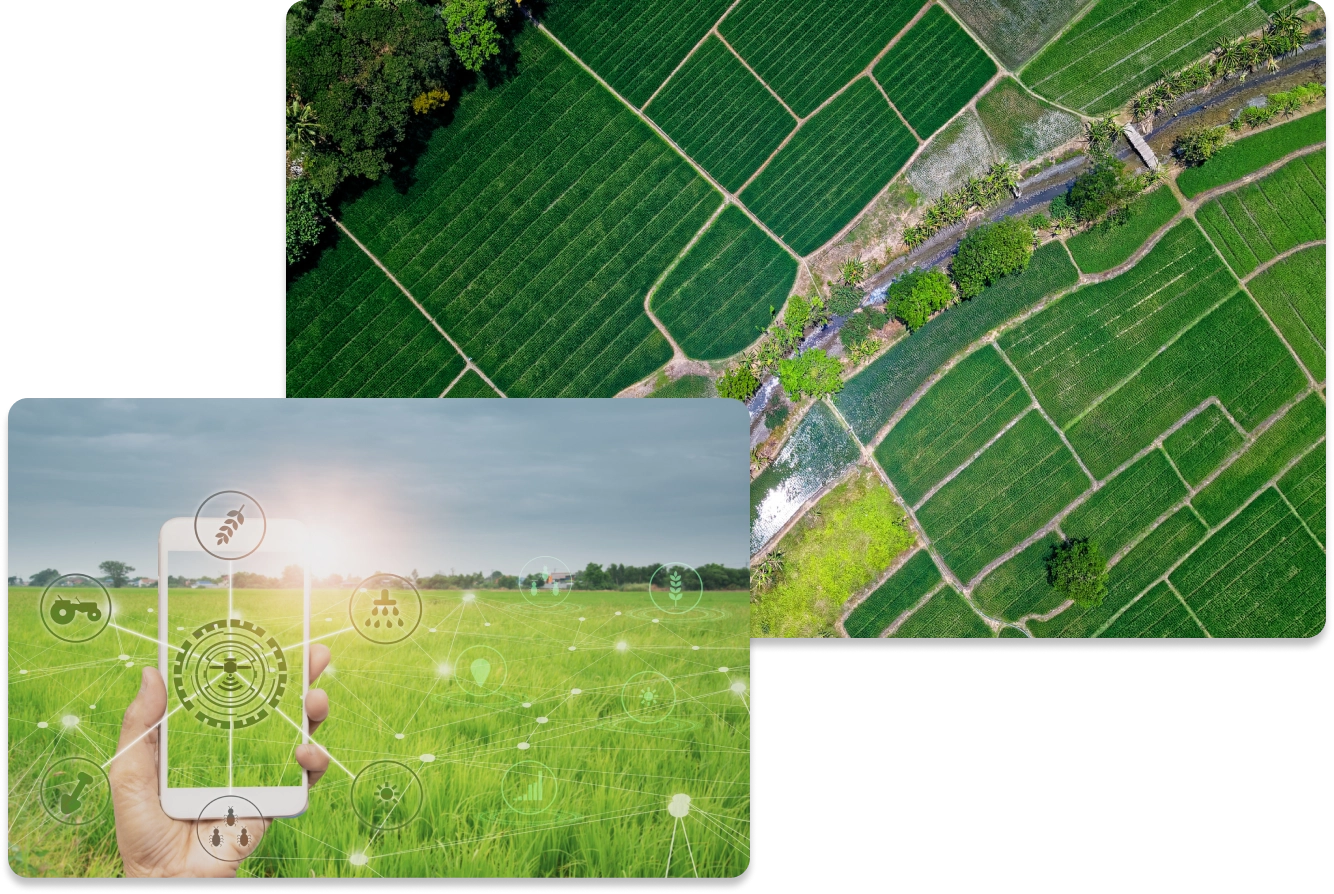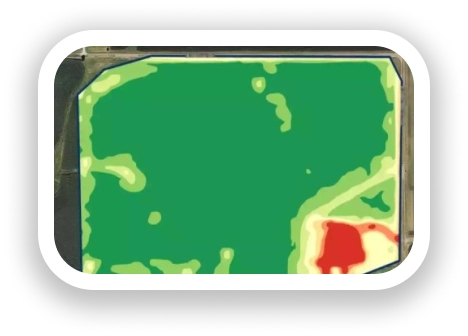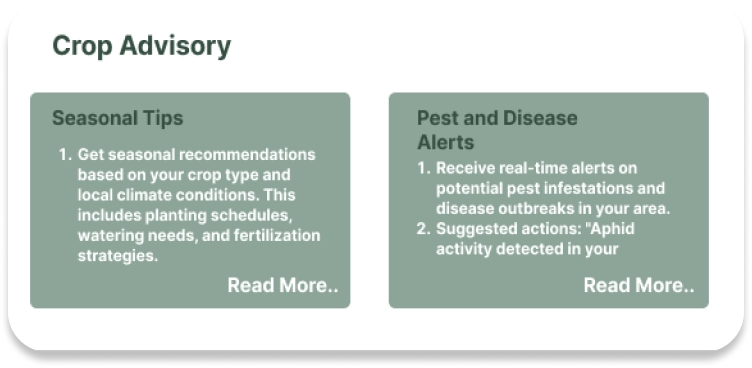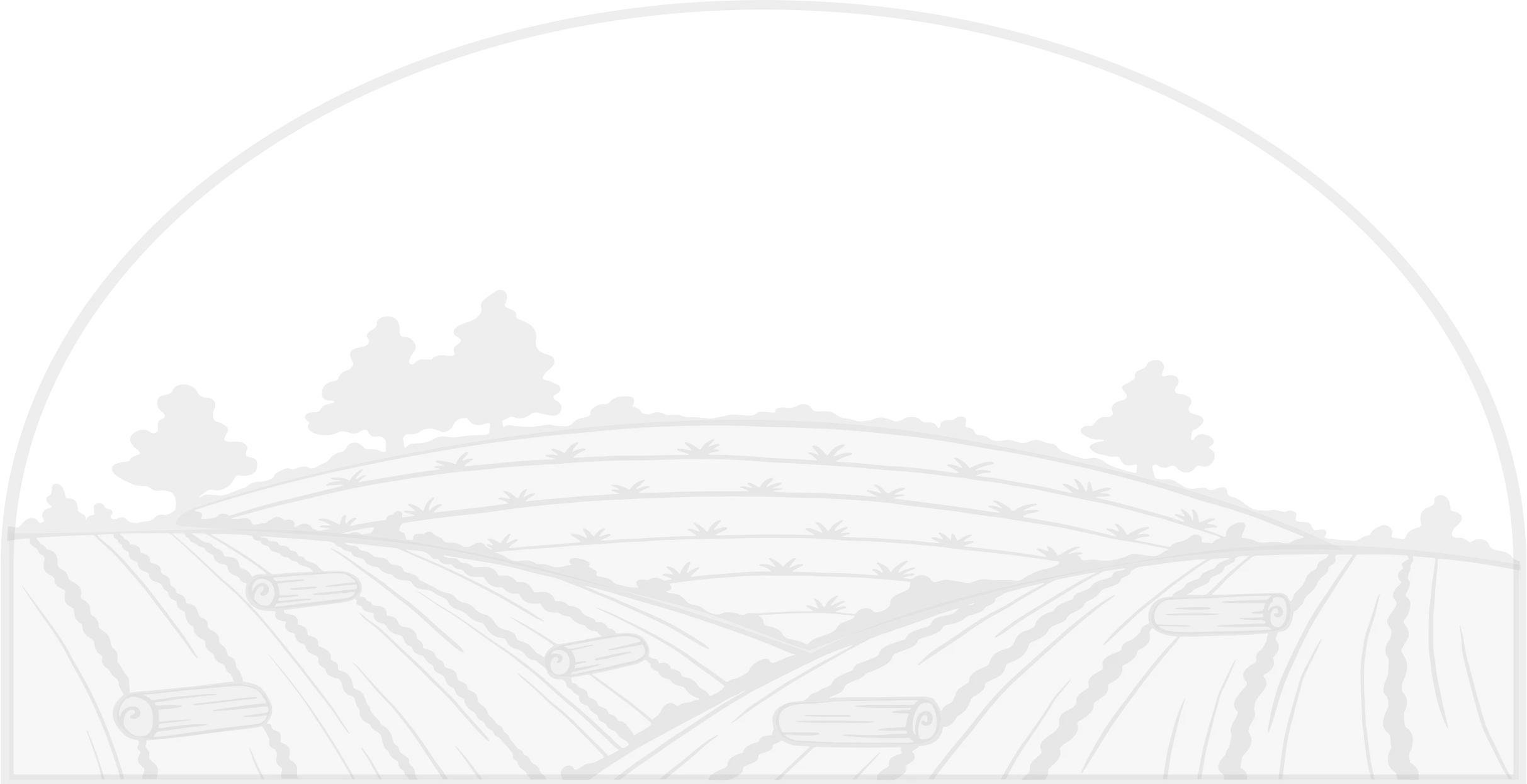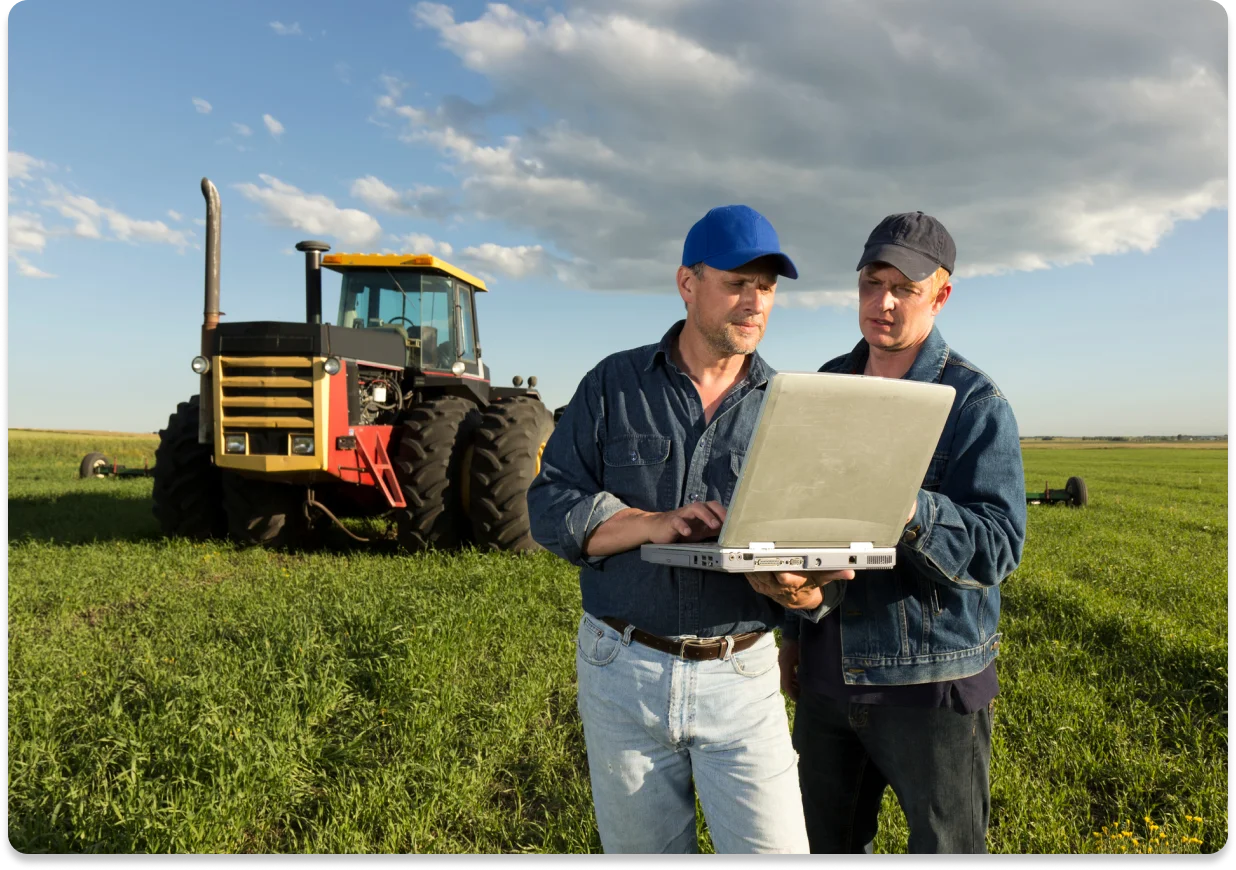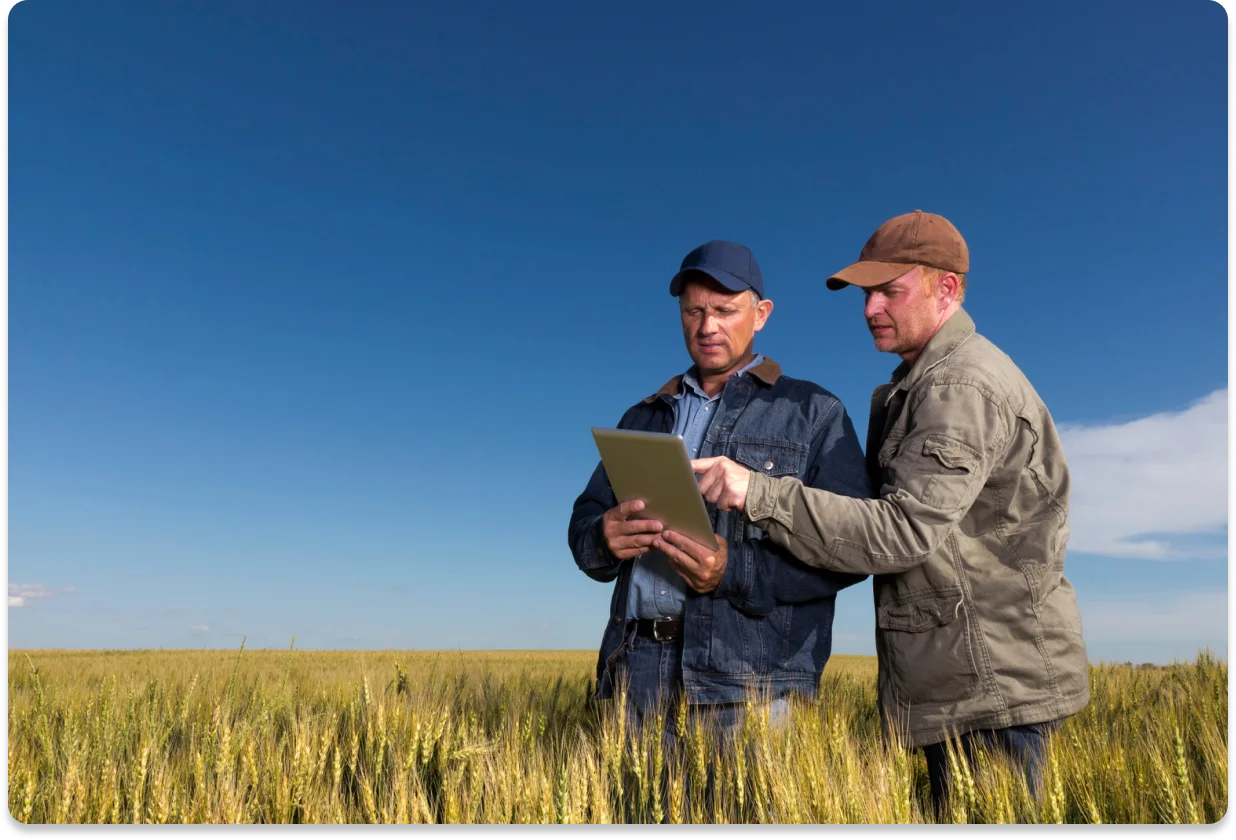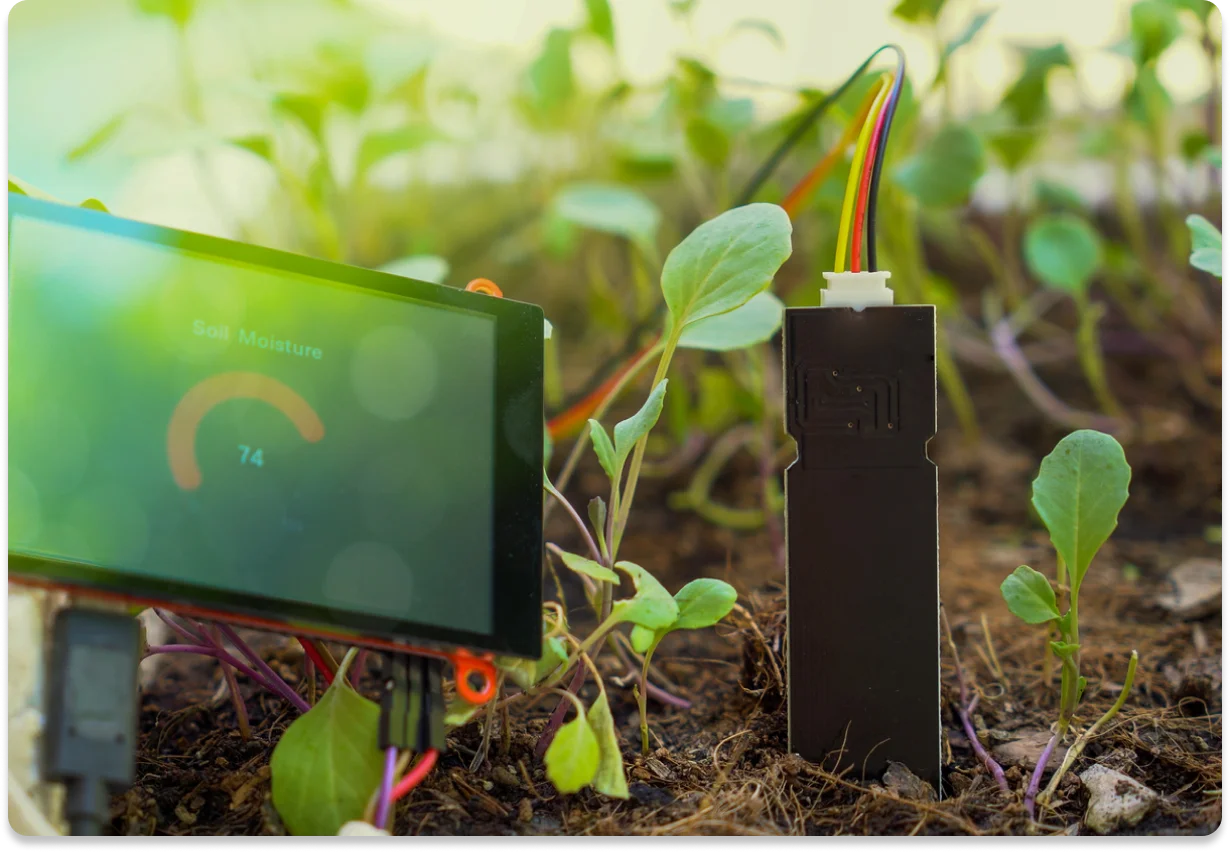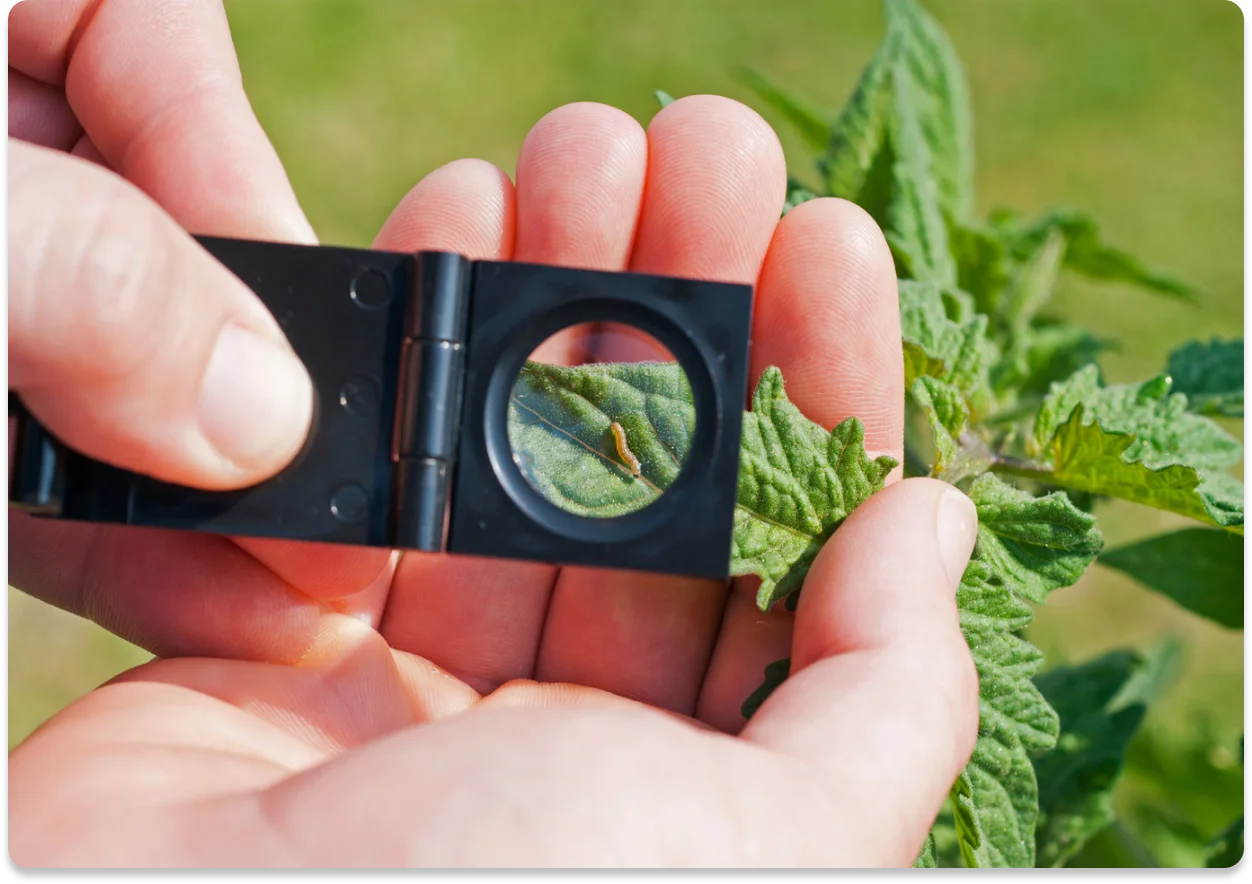Benefits of Using CropGen’s Smart Advisory
· Increased Crop Yield: Optimize your inputs and practices based on precise, data-driven recommendations, leading to improved crop health and increased yields.
· Cost Efficiency: Reduce unnecessary expenditures by applying resources like water and fertilizers more effectively and only when needed.
· Risk Mitigation: Anticipate and combat potential threats such as pest infestations or unfavorable weather conditions before they impact your crops.
· Personalized Recommendations: Offers customized advice for fertilization, irrigation, and pest control that aligns with the specific needs of each segment of your farm.
· Real-Time Updates: Keeps you informed with up-to-date information, allowing for swift decision-making and immediate action to optimize crop health and productivity.
· Scalable Solutions: Adapts to any farm size and type, providing scalable solutions that grow with your agricultural business.

.webp)

